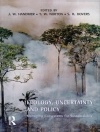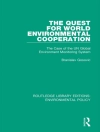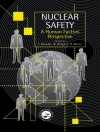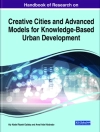As we know, rapid industrialization is a serious concern in the context of a healthy environment and public health due to the generation of huge volumes of toxic wastewater. Although various physico-chemical and biological approaches are available for the treatment of this wastewater, many of them are not effective. Now, there a number of emerging ecofriendly, cost-effective approaches utilizing microorganisms (bacterial/fungi/algae), green plants or their enzymes, and constructed wetland treatment systems in the treatment of wastewaters containing pollutants such as endocrine disrupting chemicals, toxic metals, pesticides, dyes, petroleum hydrocarbons and phenolic compounds.
This book provides a much-needed, comprehensive overview of the various types of wastewater and their ecotoxicological effects on the environment, humans, animals and plants as well as various emerging and eco-friendly approaches for their treatment. It provides insights into the ecological problems and challenges in the treatment and management of wastewaters generated by various sources.Tabella dei contenuti
Chapter 1. Green technologies for the treatment of pharmaceutical contaminants in wastewaters.- Chapter 2. Constructed Wetlands: an emerging green technology for treatment of industrial wastewaters.- Chapter 3. Application of nanoparticles in environmental cleanup: production, potential risks and solutions.- Chapter 4. Efficiency of algae for heavy metal removal, bioenergy production and carbon sequestration.- Chapter 5. Advances in plant-microbe based remediation approaches for environmental cleanup.- Chapter 6. Bioprocessing of cane molasses to produce ethanol and its derived products from South Indian Distillery.- Chapter 7. Biological and non-biological approaches for treatment of Cr(VI) in tannery effluent.- Chapter 8. Photocatalysis as a clean technology for the degradation of petrochemical pollutants.- Chapter 9. Sustainable management of toxic industrial effluent of coal based power plants.- Chapter 10. Removal of organic pollutants from contaminated water bodies by using aquatic macrophytes coupling with bioenergy production and carbon sequestration.- Chapter 11. Biopolymers and their application in wastewater treatment.- Chapter 12. Recovery of rare earths, precious metals and bioreduction of toxic metals from wastewater using algae.- Chapter 13. Green synthesized nanoparticle mediated wastewater treatment.- Chapter 14. Microbial communities in a constructed wetland microcosms and their role in treatment of domestic wastewater.- Chapter 15. Agricultural Waste: It’s Impact on Environment and Management Approaches.-
Circa l’autore
Ram Naresh Bharagava is an Assistant Professor in Department of Microbiology, Babasaheb Bhimrao Ambedkar University, Vidya Vihar, Raebareli Road, Lucknow, Uttar Pradesh, India. He earned B.Sc. in Biology from University of Lucknow, Lucknow and M.Sc. in Molecular Biology and Biotechnology from Govind Ballabh Pant University of Agriculture & Technology (GBPUAT), Pantnagar, Uttarakhand (U.K.), India. He did Ph.D in Microbiology from Indian Institute of Toxicology Research (CSIR-IITR), Lucknow and Pt. Ravishankar Shukla University, Raipur, Chhattisgarh, India. He published one author book and eight edited books and more than 140 research items in National and International journal of repute. His major thrust areas of research are Biodegradation and Bioremediation of Environmental Pollutants, Metagenomics and Wastewater Microbiology. He is life member of the Indian Science Congress Association (ISCA), India, Association of Microbiologists of India (AMI), Biotech Research Society (BRSI), and Academy of Environmental Biology (AEB).












